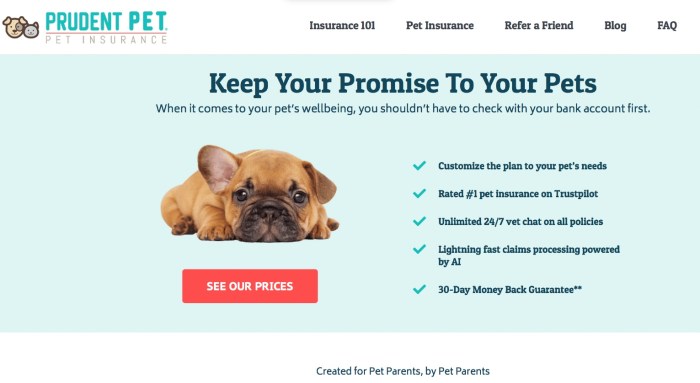Pets best pet insurance, a lifeline in the face of unforeseen veterinary expenses, offers a comforting shield against the financial burdens of pet care. A carefully considered plan can alleviate the emotional strain and financial anxieties associated with pet ownership, providing peace of mind during times of crisis. Understanding the nuances of pet insurance is crucial to making the right choice for your beloved companion.
Choosing the best pet insurance isn’t a game; it’s a crucial financial decision. While considerations like coverage and affordability are paramount, you also need to look at the specifics of your pet’s needs. For comprehensive protection, researching options like Plymouth Rock Assurance renters insurance alongside dedicated pet insurance policies is essential to fully cover your responsibilities.
Ultimately, prioritizing your pet’s health and well-being with the best pet insurance remains the top priority.
This guide explores the landscape of pet insurance, dissecting the various types of plans, the factors impacting costs, and the essential steps to choosing the best coverage for your pet’s unique needs. We’ll examine everything from accident-only plans to comprehensive policies, helping you navigate the complexities of pet insurance with confidence.
Introduction to Pet Insurance: Pets Best Pet Insurance
Pet insurance provides financial protection for unexpected veterinary expenses, offering peace of mind for pet owners. It covers various medical situations, from accidents to illnesses, and comes in different types to cater to diverse needs. Understanding these plans and their coverage is crucial for making an informed decision.
Types of Pet Insurance Plans
Pet insurance plans vary significantly, offering different levels of coverage. The most common types include accident-only plans, which cover only accidents; illness-only plans, focusing on illnesses; and comprehensive plans, encompassing both accidents and illnesses. The latter offers the most extensive protection.
Understanding the nuances between these plans is vital to ensuring the chosen plan aligns with your pet’s potential health needs. A comprehensive plan offers broader coverage, potentially providing more financial security during unexpected health events. Accident-only plans are more budget-friendly but offer less comprehensive coverage, whereas illness-only plans can offer a middle ground, providing protection against specific ailments.
| Plan Type | Coverage Details | Price Ranges (Approximate) |
|---|---|---|
| Accident-Only | Covers injuries resulting from accidents. | $20-$60 per month |
| Illness-Only | Covers illnesses and conditions not caused by accidents. | $30-$80 per month |
| Comprehensive | Covers both accidents and illnesses. | $40-$100 per month |
Factors Considered by Pet Owners
Pet owners often consider several factors when choosing a pet insurance plan. These include the pet’s age, breed, pre-existing conditions, and the desired level of coverage. The cost is also a significant factor, as is the reputation and reliability of the insurance provider.
- Age: Younger pets are generally less prone to illness, so insurance premiums are typically lower. Older pets may have a higher risk of chronic conditions and higher premiums.
- Breed: Certain breeds are predisposed to specific illnesses, which can affect insurance costs.
- Pre-existing conditions: Some insurance companies may exclude coverage for pre-existing conditions, or they may charge higher premiums.
- Coverage level: Comprehensive coverage generally has a higher premium but provides more financial protection in case of illness or injury.
Factors Influencing Pet Insurance Costs

Source: futurecdn.net
Pet insurance premiums are influenced by various factors, making accurate comparisons between different providers essential. Breed, age, and pre-existing conditions are major determinants of the premium amount.
Breed, Age, and Pre-existing Conditions

Source: thepennyhoarder.com
Certain breeds are more prone to specific illnesses, like hip dysplasia in large breeds, leading to higher insurance premiums. Similarly, older pets tend to have a higher risk of developing chronic conditions, increasing their insurance cost. Pre-existing conditions, such as allergies or heart problems, can significantly affect the cost or even result in exclusions from coverage.
| Insurance Provider | Pricing Model | Average Premium (Approximate) |
|---|---|---|
| Company A | Age-based, breed-specific | $45-$90 per month |
| Company B | Comprehensive, tiered coverage | $50-$120 per month |
| Company C | Value-based, flexible coverage | $35-$85 per month |
Coverage Details and Exclusions
Pet insurance policies cover various veterinary expenses, but exclusions exist to limit coverage. Understanding these exclusions is crucial to ensure realistic expectations. Common reasons for claim denial often involve pre-existing conditions or conditions excluded by the policy.
Covered Expenses and Exclusions
Commonly covered expenses include emergency care, surgery, hospitalization, and prescription medications. Exclusions might include routine checkups, cosmetic procedures, and conditions resulting from neglect or abuse. Policies may have specific limitations on coverage amounts per incident or annually.
Reasons for Claim Denial, Pets best pet insurance
Claims can be denied for various reasons, such as failure to adhere to pre-authorization requirements, failure to submit required documentation, or if the condition falls under an exclusion clause.
| Coverage Detail | Description |
|---|---|
| Accident | Covers injuries from accidents, like falls or car collisions. |
| Illness | Covers illnesses, including infections, allergies, and chronic conditions. |
| Exclusions | Specific conditions or treatments excluded from coverage (e.g., routine vaccinations). |
Outcome Summary
In conclusion, securing the best pet insurance for your furry friend is a proactive step toward ensuring their well-being and your financial security. Navigating the options and understanding the intricacies of coverage, costs, and claims processes is essential. Ultimately, the right choice involves careful consideration of your pet’s individual needs, your budget, and the specific features offered by different providers.
This comprehensive guide equips you with the knowledge to make informed decisions, safeguarding your beloved companions and easing the burden of unforeseen medical expenses.